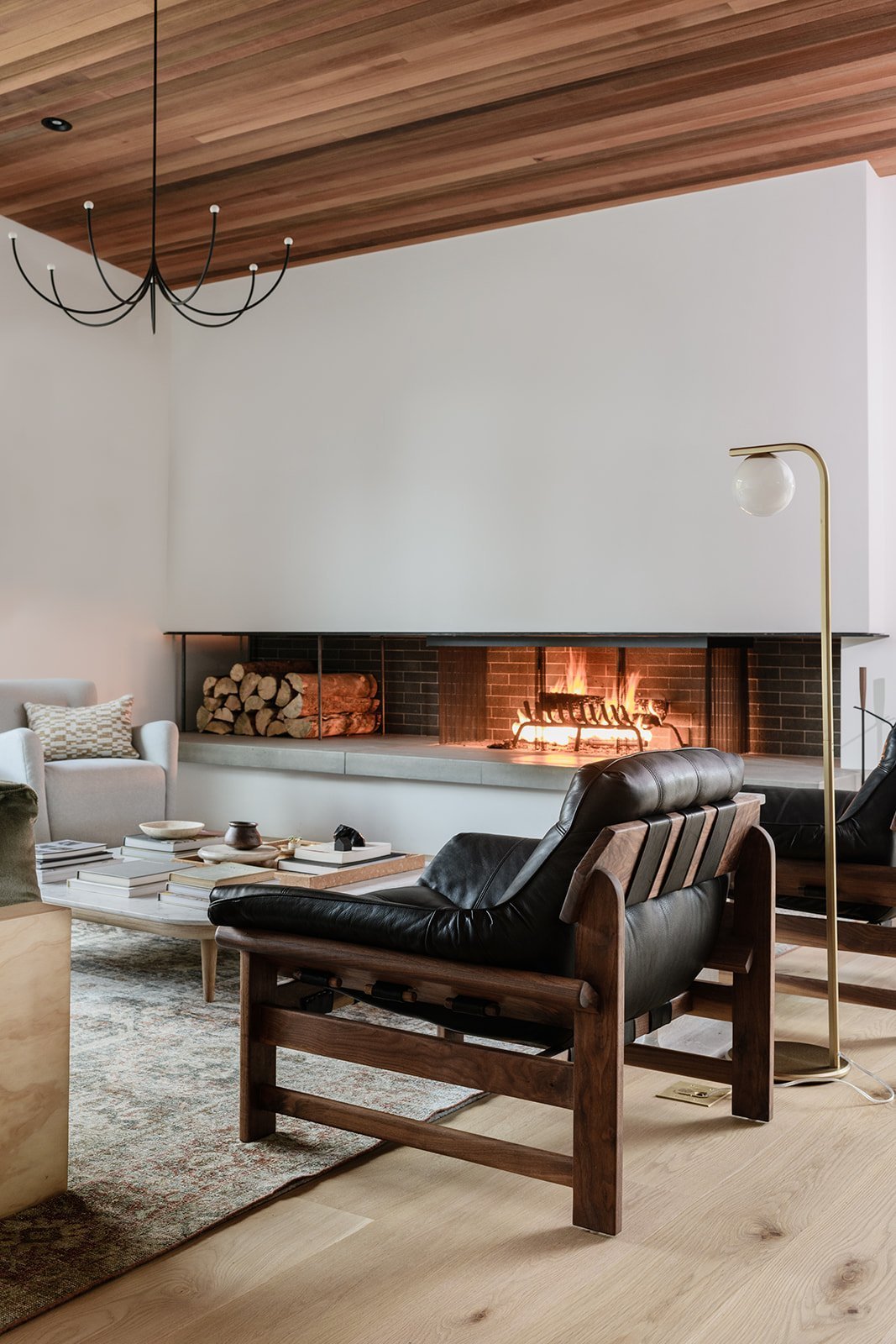Anatomy of a Fireplace
An important architectural anchor in a living space, and arguably the heart of a home, a fireplace is a natural focal point and gathering spot during the cold months. A fireplace provides a starting point for arranging furnishings, reinforces the architectural viewpoint of the home, and provides ambiance. And of course, in a cold climate like Minnesota, they supplement the heating of the home and can offer peace of mind in case of a utility failure. There’s also an undeniable nostalgic element to fireplaces that can’t be overlooked — they’re the background to many photos and memories in the life of a family and help offer that feeling of “home.”
For the most part, today’s fireplaces fall into two broad categories — wood-burning or gas. A wood-burning fireplace or stove is just that, it requires burning of wood logs and may involve an open firebox, a stove inserted into a firebox, or a free-standing wood stove. A gas fire may be set into faux logs to resemble a real fire, be a minimal linear flame, or set into another concrete or ceramic shape. Each has advantages and disadvantages, requires different elements during the construction phase, and has different needs for maintenance. Ultimately, choosing between a wood-burning or gas fireplace is pretty personal, but there is plenty to consider.
A brick fireplace with a simple mantle
Design by Yond Interiors, Photo by Amanda Birnie
A free-standing wood stove
Design by Yond Interiors, Photography by Erin Little
Fireplaces: Wood-Burning vs. Gas
The first step in designing a fireplace is choosing the heating element. Because they each have different structural needs, changing course once construction is underway is disruptive and costly, and may not even be possible in some cases. As I’ve said, the choice is largely personal and most of our clients already have a preference.
A wood-stove insert with a narrow stone surround and raised hearth
Design by Yond Interiors, Photography by Amanda Birnie
A linear gas fireplace with a marble slab surround and no hearth
Design by Yond Interiors, Photography by Amanda Birnie
Wood-Burning, Pros and Cons
There’s really no way to replicate the sounds and smells of real fire, so if those nostalgic elements are important to you, then a wood-burning fireplace is the way to go. But, there are some considerations. A wood-burning fireplace requires a chimney, making its placement within a floorplan crucial (especially what is placed above it). Because of the structural elements required, a wood-burning fireplace is the more expensive option, ranging from around $8,000 to $20,000. Annual cleaning by a professional is necessary for safety, and of course, it will require acquisition and storage of firewood. For some, the ritual of building and maintaining a fire is enjoyable, while for others, it’s a lot of trouble and a lot of extra mess.
Gas Logs, Pros and Cons
Having a fire in an instant without the mess of firewood is what appeals to most people. A gas fireplace will heat a room more efficiently than a open firebox, which may even draw heat out of a space when not in use. Because they only require an exhaust pipe for ventilation, gas fireplaces are easier to install and less expensive, often adding under $10,000 to a project. With so many options available for the appearance of the fire, gas fireplaces offer more flexibility size and style-wise, ranging from classic to minimal and sleek. The enclosure around a gas fireplace can get quite hot, so the same care should be taken with children and pets as one would with a wood fire.
A wood-burning fireplace with a raised hearth and plaster surround
Design by Yond Interiors, Photography by Amanda Birnie
A gas log fireplace with a plaster surround
Design by Yond Interiors, Photography by Amanda Birnie
Fireplace Design
The architectural style of the home is absolutely the most important factor when considering the style and design of a fireplace. Our body of work includes rustic-modern new construction, a renovation of a historic cottage, and many homes in between, so we’ve designed (fireplaces of many different styles, too. The more elements that are included in the design, the more traditional — and often formal — the fireplace will feel, and the decor of the space also goes in that direction. Several times, we have forgone the mantle in favor or a textural wall treatment like plaster or limewash for a minimal look, and we tend to favor a solid stone surround over tile. In larger rooms and spaces with tall ceilings, it’s nice to raise the hearth so that the fireplace feels in keep with the scale of the room, and in smaller spaces, it’s appropriate to keep the hearth flush with the floor.
When a wood-burning fireplace is specified, it’s important to also consider storage for firewood and the associated tools. When possible, we like to design integrated firewood storage so keep the clutter around the fireplace to a minimum, and to turn into a decorative element.
A free-standing wood-burning stove in a dining space
Design by Yond Interiors, Photography by Amanda Birnie
Custom wood storage solution
Design by Yond Interiors, Photography by Amanda Birnie
IN CASE YOU MISSED IT
Our tips for designing with brown.
Learn about how we approach historic home renovations.
Our favorite palettes always include saturated neutrals.
We believe that well-curated small accessories can transform a room.









